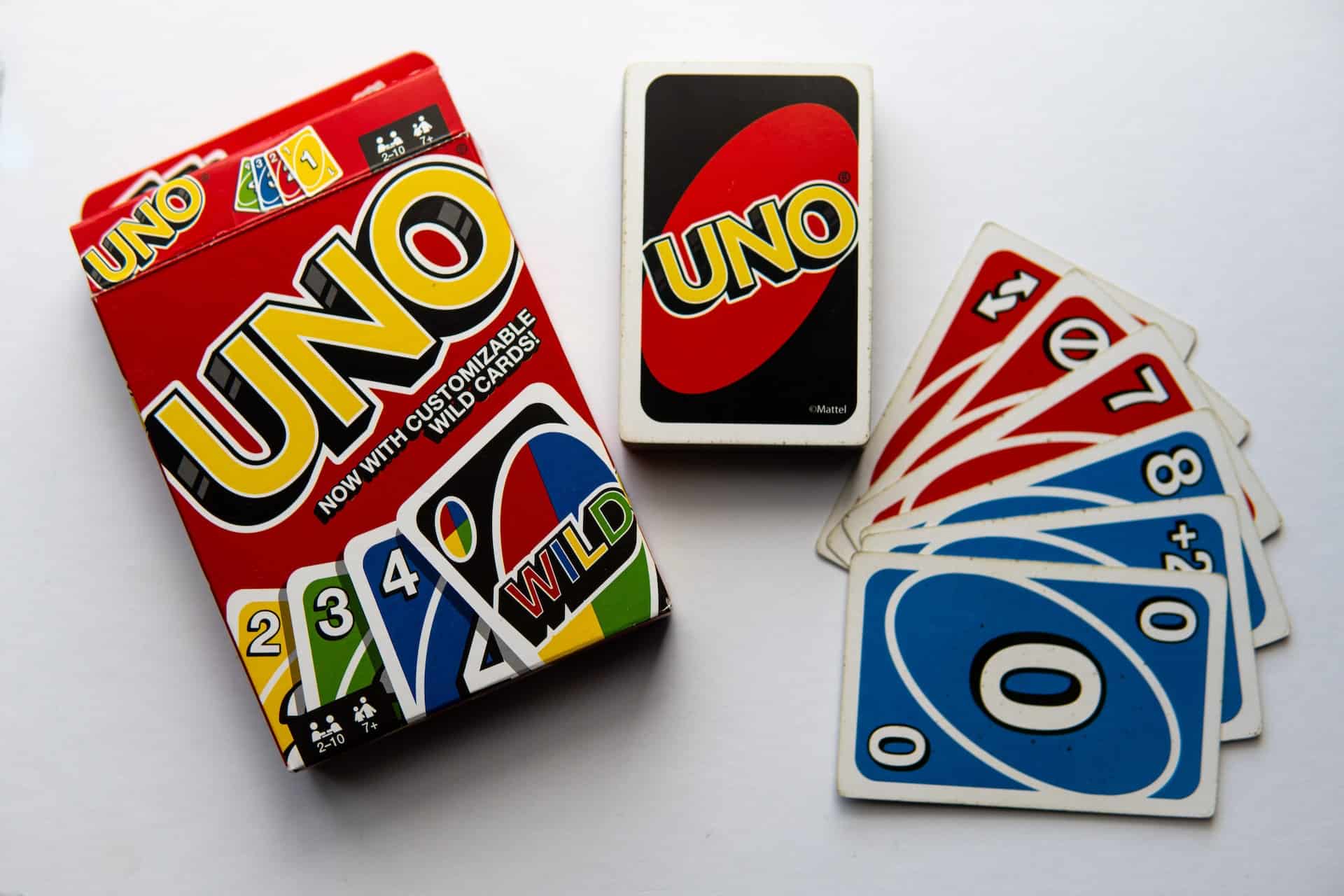What's the one thing children are crazy about? Did you say toys? That is correct! All the children in this world want one thing: toys.
Do you remember where you bought your first toy from? Let me guess. You must have bought it from Mattel since it has always been a top toy manufacturing company.
Mattel has been operating and catering to the needs of children for decades. We all have been to a Mattel shop multiple times as a child. No other shop has toys in such a wide variety of toys similar to Mattel.
Besides the variety of toys, Mattel has always been ahead of any other toy manufacturer. As a result, many successful toys and games were launched by Mattel, such as Barbie, UNO, Magic 8-ball, etc.
Looking at the size of this company and its significance as a toy manufacturer, today, we have decided to conduct a Mattel SWOT analysis. A SWOT analysis is a business tool to analyze the organization's strengths, weaknesses, opportunities, and threats.
A SWOT template highlights the external and internal factors that impact an organisation's operations. Now that you know what SWOT analysis is, let's look at Mattel's history and current operations.
The toy company was established by Ruth, Elliot, and Harold in 1945. Since then, the company's sales have increased because Mattel closely monitors the changing trends and customer demand.
The journey of Mattel truly started after it manufactured and sold its first big hit, Uke-A-Doodle, in 1947. You might be thinking what this was. Well, Uke-A-Doodle was basically a Ukulele made for children.
At the end of the 1940s, Mattel incorporated and developed its headquarters in Los Angeles. The decade of the 50s proved to be very beneficial for Mattel since, in this decade, the toy company developed multiple toys that became a huge success.
Moreover, Mattel adopted a new marketing strategy in 1955 that significantly helped the company. It used Mickey Mouse Club to advertise the products of Mattel through television.
In 1960, the toy manufacturing company became a publicly traded company. In the decade of the 60s, the toy company further grew and manufactured some toys like Ken Doll and the Rock-A-Stack that became massive hits. At the end of this decade, Mattel launched cool miniature die-cast vehicles under the banner of Hot Wheels.
Over the decades, Mattel kept introducing new toys that helped the brand grow further. Then, in 1990, the toy company moved its operations to California. Mattel acquired a few brands to expand its operations, such as American Girl and Fisher-Price.
The toy manufacturing company kept evolving its products with time by looking at consumer demand. So, apart from conventional toys, Mattel embraced technological advancements and manufactured its first VR in 2014.
Other than that, in 2021, Mattel became the first toy company to launch its NFT. Currently, Mattel is one of the biggest toy manufacturing companies in terms of revenue. In 2022, Mattel's revenue was $5.8 billion.
The toy manufacturing brand is able to make such a huge revenue through both local and international operations. Mattel is present in more than 35 countries. Meanwhile, its products are sold in more than 150 countries. To manage all these operations worldwide, Mattel has hired 36,300 employees.
Now that we know the history and the current operations of Mattel let's proceed further and carry out Mattel's SWOT analysis to highlight what internal and external factors impact the operations of Mattel.
Mattel Strengths

Any business that wants to succeed must have strengths to make its place and survive in the market. Every business possesses some strengths. Let's proceed further and look at what strengths Mattel possesses.
International Presence
Companies look for ways to spread their operations internationally. By doing so, businesses can increase their customer base, which helps them generate more revenue.
Mattel is a multinational toy manufacturing company. It started its operations in the US but now operates in multiple countries other than the US. Currently, Mattle is geographically present in 35 countries, while its products are sold in more than 150 countries.
Such a vast international presence of Mattle helps it penetrate international markets. Furthermore, this causes the customer base of the toy manufacturing company to increase.
Strong Marketing
Marketing plays a major role in the success of any brand. Therefore, businesses need to make a good marketing strategy along with good products.
If we talk about Mattel, several factors led to its success. However, good marketing strategies made Mattel grow over the years. First, let's look at the history of Mattel. We know that in the 50s, the toy manufacturing brand started advertising its products through Mickey Mouse Club.
Later, Mattel made two racers endorse its Hot Wheels racing cars. This made Hot Wheels famous among the fan following of those racers.
Besides that, Mattel also took multiple movie stars and celebrities like Alec Baldwin and Ringo Starr from the Beatles to narrate its famous Thomas & Friends series. This marketing strategy helped Mattel grow and reach where it is now.
Strong Portfolio
Businesses look for ways to increase their revenue streams and strengthen their portfolios. A strong portfolio improves the position of a company financially. In addition, it removes its reliance on a single source of revenue.
Mattel is one company that has multiplied its revenue streams and strengthened its portfolio. In 1947, the toy manufacturing company made its first toy. Over the years, Mattel has launched some famous toy brands, such as Barbie, Hot Wheels, UNO, etc.
Mattel owns brands that offer different categories of toys to cater to the needs of children with different tastes. Possessing many brands makes Mattel's portfolio strong and gives it a competitive edge in the market.
Mattel Weaknesses

Just like companies possess strengths, they also possess some weaknesses. These weaknesses are the factors that prevent companies from achieving their true potential. Weaknesses can be eliminated if they are identified timely, and steps are taken to overcome them. Let's take a look at what weaknesses Mattel possesses.
Toxic Toys Scandal
Any sort of controversy or scandal hurts companies. As a result, businesses try to avoid controversies since they can result in a loss of customer base and revenue.
In 2007, Mattel became the subject of a controversy that damaged the company's reputation and finances. The controversy arose when a retailer found evidence of lead paint in Mattel's toys. Lead paint contains harmful substances that could harm children.
Hence, Mattel had to call back millions of its toys. Moreover, Mattel had to pay a penalty of $2.3 million. Besides the financial damage, Mattel's reputation was damaged since people couldn't trust the company again.
Large Workforce
Every business finds ways to cut its operational costs so that it can maximize its profits. One of the major expenses of any business is the salary of employees. Therefore, businesses often plan to reduce salary expenses to earn more profits.
Mattel is one of the companies that have a large workforce. The total number of employees of Mattel is 36,300. The toy manufacturing company spends a lot on its employees, due to which the company cannot make a lot of potential profit.
Targets Only Kids
Businesses always try to increase their customer base. This is why they tend to target large groups of people. For example, If you look at Uniqlo, its products target people of different age groups. This is because the clothing brand offers clothing for both adults and kids. However, that's not the case with Mattel.
Mattel has been a toy manufacturer ever since it got established. Hence, the products of Mattel only attract kids. This is a weakness for the toy manufacturing company since its limited target audience.
Mattel Opportunities

Every organization gets opportunities to grow. However, to avail them, it is essential for organizations first to identify the opportunities that lie ahead of them. So let's proceed further and look at what opportunities are present for Mattel to grow.
Growing Demand For Toys
Every business wants the market to have a high demand for the products it sells to make high profits. Mattel is one of the businesses that expect to grow since the demand for toys is expected to grow at 7.3%.
This acts as an opportunity for Mattel to increase its market share by attracting more customers to buy products from Mattel.
Manufacturing Plants In Developing Economies
Businesses often run after developed economies, although the cost of operations is really high in the developed economies, due to which the profits of the business that operates in such economies are low.
Although Mattel is geographically present in 30 countries, hardly any of these countries is a developing economy. Mattel can establish a manufacturing plant in developing economies such as India, Pakistan, Bangladesh, etc. By doing so, the operating costs of Mattel will drop significantly since labor in these countries is very cheap.
Increase The Targeted Audience
Any business that targets a larger audience can make higher revenue. One way of increasing the targeted audience is to offer multiple products that attract different audiences.
Mattel currently offers toys. Hence the targeted audience of the company is kids. However, this acts as an opportunity for Mattel since it can increase its customer base by offering products that also attract people of older age groups, such as gaming accessories and smart gadgets.
Mattel Threats

Every organization faces threats from internal as well as external factors. In this section, we will look at what threats Mattel faces from the external environment.
Change In Taste of Children
Can you recall how life was as a kid when there were no smart gadgets to look at? In those days, all the children could do was play with their toys. This is why Mattel became such a huge success back then.
However, in today's era, the preferences of children have changed. For example, many children prefer watching cartoons and shows on phones, TVs, and laptops instead of playing with toys. This change in taste can cause the demand for toys to fall in the future. As a result, Mattel will suffer.
Imitation of Products
Mattel has been manufacturing toys and games for decades. Multiple toys didn't exist previously, and Mattel launched them. For example, Mattel manufactured UNO cards and developed the game UNO.
Although Mattel owns the game, many small manufacturers own and sell UNO cards independently. Similarly, many manufacturers have imitated other Mattel toys, like Barbie. This practice impacts the operations of Mattel negatively and causes its revenue to fall.
High Competition
Businesses always want to operate in an industry with low competition to increase their market share and earn huge profits.
The industry where Mattel competes is highly competitive. There are several companies present that offer similar products. For example, the largest toy manufacturing company by revenue is Lego.
Mattel has to constantly innovate and be at its best so that no other toy company snatches its market share.

Final Thoughts on Mattel SWOT Analysis
Mattel is one of the largest toy manufacturing companies. It was established in 1945, yet it has remained relevant to date. Mattel has launched some famous toys such as Barbie and Hot Wheels.
Since we have all grown up while playing with the toys manufactured by Mattel, we decided to carry out a Mattel SWOT analysis to analyze what internal and external factors impact the operations of Mattel.
SWOT analysis of the toy manufacturing company made us aware of what strengths, weaknesses, opportunities, and threats Mattel face. The factors identified in this SWOT analysis can also be represented in a SWOT Matrix.
After reading this article, we assume you know how to conduct a SWOT analysis. If you want to know more about SWOT analysis, here are some of its examples.









